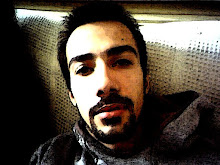Buryat shamans’ spirits are spectres of ancestors and individuals who used to live in the human world and practised as well-known shamans or were famous for other merits. Mongols believe that three or more years after their death, shamans become spirits (ongon) and are able to come back to the human world by seizing the body of another shaman, who is (in most cases) his/her descendant or apprentice. Considering the fact that certain people from the past can also come and take possession of a shaman, we might assume that the abilityof becoming an ongon is not only the shamans’ priviledge.
Spirits do not want to part from the world they used to live in. They do exert a significant influence on their descendants’ lives―either by taking care of them or by being angry with them. Spirits demand their descendants’ attention and want to be served and entertained by them on a regular basis. Since they do not have body, their only possible way to come to the living people’s world is to use one of them as a vehicle for appearance. That is why they choose and even force certain people to be their mediators, i.e. to become shamans.
Shamans have to be possessed by their spirits (ongon oruulax) regularly; else they become seriously ill. They are similar to artists, who also show sings of depression or even fall ill if they do not have the opportunity to produce works of art. An even more striking similarity between some features of shamans and artists, and also the fact that Mongols, too, closely associate them can be apprehended by considering that in modern Mongolian, the same expression (ongon orox “the spirit enters”) is used for the shamans’ trance and the artists’ inspiration. When someone, for example, does not feel like singing when recquired, s/he might make excuses saying: ongon oroogüi lit.: “The spirit has not entered”, which means: “I am not possessed by the spirit”. (A similar expression can be found even in English: “the spirit does not move me”.) According to the Mongol way of thinking, the creative/performing activity of shamans and artists is concieved as a meeting of the shaman/artist and the spirits. Considering their relationship, the spirit―or we could say “inspiration”―is undoubtedly predominant. Similarly to the poet who feels to be forced by his/her thoughts and feelings to put them down on paper, the shaman is forced by their spirits to invite them. Mongols hold that if the shaman does not fulfill the spirits’ requirements, they will be angry and might even kill him/her
In order not to offend the spirits, Buryat shamans have to perform their spirit- pleasing rituals three times a month. The ninth, nineteenth, and twenty-ninth of each lunar month are the days on which these rituals (called yühen “nine”) have to be performed by the so-called black shamans, whose mount is their drum and whose costume is regarded as their armor. White shamans2, who wear a blue brocade gown (xüxe xamba nümerge) and use a bell and a vajra instead of a drum and a drumstick, perform the same ritual on the eighth, eighteenth, and twenty- eighth, or on the second, eighth, and sixteenth day of each lunar month. These days are considered to be the descending days of the White Old Man (Sagaan übegenei buulttai üder), the patron deity of white shamans. Buryats refer to spirit- pleasing rituals as naima naimanai nagalga yühe yühenei yürgelge “swaying of the eighth, swinging of the ninth” indicating that these rituals are performed on the aforementioned days.
Spirit-pleasing rituals can be conducted indoors (yühengee xexe) or outdoors (taxilga). Those performed in the shamans’ yurt are of smaller importance than those celebration-like rituals observed in the nature at a sacred place, usually once a year. The main purpose of a spirit-pleasing ritual is to maintain the good relationship whith the ancestral spirits by inviting them to the shaman’s home and by entertaining them to food and drink. On the days spirit-pleasing rituals are conducted, rather the spirits want to be invited than the people want them to come.











